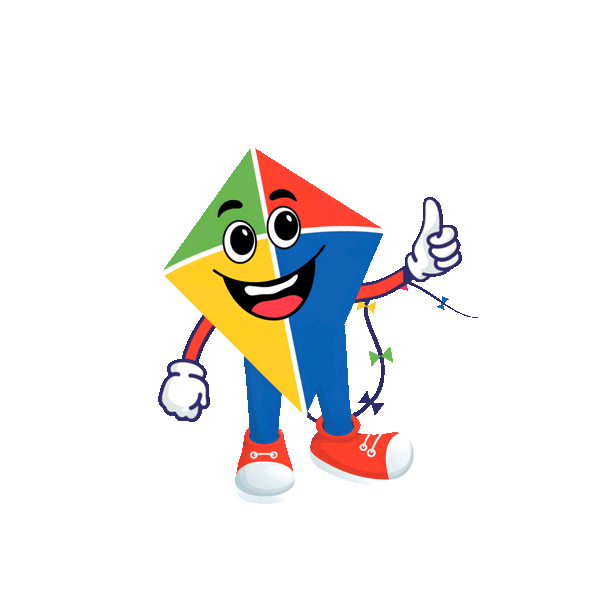How LEGO Toys Boost Problem-Solving and STEM Skills in Kids: A Complete Parent Guide

In every home where a child is growing, learning happens through curiosity. A toddler stacking blocks, a preschooler arranging toys, or a school-going child building towers, all of these are signs that children learn best by doing. And among the many toys that support hands-on learning, LEGO stands out as a timeless favorite.
From simple DUPLO sets designed for tiny hands to advanced kits that spark early engineering ideas, LEGO toys are more than toys; they're powerful tools that help kids think better, create boldly, and solve problems independently. Whether it’s the colorful Duplo Alphabet Train or the classic brick sets, LEGO strengthens essential lego building skills and nurtures STEM abilities in the most natural way possible, through play.
This blog will walk you through how LEGO toys improve problem-solving skills, support early STEM learning, and build a strong developmental foundation through constructive play.
Why LEGO Toys Are More Than Just Entertainment
Parents often observe how focused their child becomes when playing with LEGO bricks. Hours pass without boredom. Ideas flow nonstop. A simple pile of bricks becomes a car, tower, castle, or even an entire city.

This is the magic of LEGO, kids don’t just play; they create, experiment, and discover.
LEGO Builds Real Mental Skills
Kids learn without realizing it:
✔ How to fit shapes
✔ How to make structures stable
✔ How to follow steps
✔ How to fix mistakes
✔ How to complete a project
And what’s more beautiful? All this happens while they’re having fun.
1. LEGO Toys Strengthen Problem-Solving Skills Naturally
Children today need problem-solving more than ever. From academics to real life, their ability to think through challenges decides how confidently they face situations. LEGO helps nurture this skill through a simple concept, building and rebuilding.
a. Breaking Down Problems Into Steps
A LEGO structure cannot be completed in one go.
Kids learn to break tasks into smaller steps:
- Build a base
- Add walls
- Shape the top
- Make adjustments
This process improves analytical thinking.
b. Trial and Error Becomes a Learning Tool
If a brick doesn’t fit, try another.
If a tower falls, build a stronger base.
If a pattern doesn’t match, rearrange pieces.
LEGO shows kids that mistakes are not failures; they are opportunities to try again.
c. Encouraging Logical Thinking
Kids must think logically when building:
Which brick fits here?
What shape supports the structure?
How do I make it stable?
These small decisions develop their logical reasoning.
2. LEGO Toys Lay a Strong Foundation for STEM Skills
STEM learning begins at home long before a child enters school, and LEGO toys play a major role in shaping early STEM abilities.
a. Science Through Observation
LEGO helps kids understand basic scientific ideas:
- Balance
- Gravity
- Cause & effect
- Structure stability
For example, when a tall tower falls, a child learns that it needs a wider base.
b. Technology Through Mechanisms
Even simple LEGO sets introduce technological thinking:
- Movements
- Rotations
- Connections
- Gear concepts (in advanced sets)
Children start recognizing how objects function mechanically.
c. Engineering Through Construction
Every time a child builds something, they apply engineering ideas:
- Designing
- Testing
- Adjusting
- Improving
In other words, LEGO inspires young engineers.
d. Mathematics Through Play
LEGO builds math readiness because it involves:
- Counting bricks
- Sorting by size
- Sequencing
- Understanding shapes
- Recognizing patterns
- Spatial awareness
Even the Duplo Alphabet Train encourages sequencing, sorting, and pattern creation.
3. The Power of LEGO Building Skills in Brain Development
Developing strong lego building skills helps children sharpen their minds in multiple ways:
a. Boosting Memory
Kids remember patterns, steps, and past builds.
This enhances both short-term and working memory.
b. Enhancing Focus
Completing a LEGO project requires attention.
Even hyperactive kids tend to stay calm and focused during play.
c. Improving Spatial Awareness
Children learn how shapes form bigger structures—a skill useful in math, art, and science.
d. Stimulating Creativity
LEGO gives children complete freedom:
- Build a car
- Make an animal
- Design a new shape
- Create imaginary worlds
There’s no right or wrong, just imagination.
4. Constructive Play: The Foundation of Smart Learning
Constructive play is when kids build, arrange, or create something with their hands. LEGO is the perfect example of this.
Benefits of Constructive Play
✔ Better motor skills
✔ Stronger hand-eye coordination
✔ Logical thinking
✔ Creative thinking
✔ Improved patience
✔ Better understanding of space and shapes
Children engaged in constructive play naturally develop the ability to turn ideas into real objects, an essential life skill.
5. Why the Duplo Classic Alphabet Town Is Perfect for Early Learning

The Duplo Classic Alphabet Town is one of the best beginner sets for toddlers and preschoolers. It mixes building, learning, and storytelling in the simplest and most engaging way.
a. Alphabet Recognition Made Fun
Kids learn letters visually and physically by handling letter bricks.
b. Colorful Patterns Improve Sorting Skills
Children begin grouping bricks by shape and color, strengthening cognitive skills.
c. Perfect for Tiny Hands
The bricks are large, safe, and easy to hold.
d. Early lego building skills Development
Simple stacking and connecting introduce early construction techniques.
e. Creativity Through Characters
Kids invent stories about the train, animals, numbers, and passengers.
f. Speech and Language Support
Parents can ask:
“What letter is this?”
“Can you spell your name?”
“What sound does this letter make?”
This builds vocabulary and confidence.
6. Social and Emotional Growth Through LEGO Play
LEGO helps kids grow emotionally and socially, not just intellectually.
a. Encourages Sharing
Children learn to pass bricks, wait for turns, and collaborate.
b. Teaches Patience
Building takes time. Kids learn not to rush.
c. Builds Confidence
Completing a creation makes them feel proud.
d. Reduces Stress
The repetitive nature of building can be calming for children.
7. How Parents Can Make LEGO Time More Educational
Simple involvement from parents can multiply learning benefits.
1. Ask Guiding Questions
Instead of giving instructions, try:
“What are you trying to build?”
“How can we make this stronger?”
“Which brick do you need next?”
This improves communication skills.
2. Introduce Simple Challenges
Build a bridge
Make a tall tower
Create a pattern
Build using only one color
Challenges push kids to think creatively.
3. Combine LEGO With Storytelling
With the Duplo Alphabet Train, parents can tell stories using letters, characters, and objects.
4. Let Kids Lead
Kids feel more confident when allowed to create freely.
8. Why LEGO Is a Powerful Learning Tool for Every Age
Whether your child is 2 or 10, LEGO grows with them.
For Toddlers:
Duplo sets help with colors, letters, and fine motor control.
For Preschoolers:
LEGO develops early STEM understanding and creativity.
For Older Kids:
Complex sets improve engineering thinking and advanced problem-solving.
No matter the age, LEGO continues to build confidence, intelligence, and imagination.
Conclusion: LEGO Builds More Than Structures, It Builds Minds






